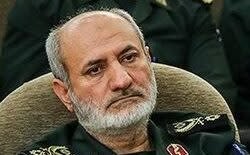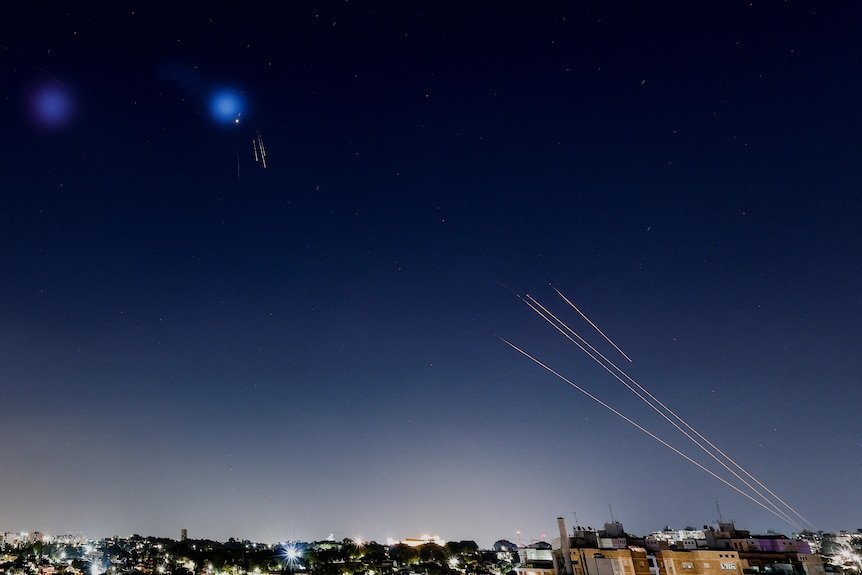The Army’s 250th birthday parade was not the grand military spectacle that many anticipated, and for that Americans can breathe a momentary, measured sigh of relief.
It was a family-friendly conclusion to a celebratory day, with events on the Mall and fireworks at the end. What had been billed as an overwhelming display of military might turned out to be a linear history lesson, from the early days of revolution to the age of robotic dogs and flying drones. A narrator made sense of it all over loudspeakers and for those watching the live stream on television, with a script that rarely strayed from the Army’s disciplined sense of itself as a lethal fighting machine in the service of democracy and the Constitution.
The tone was reminiscent of the wall texts and exhibits at the National Museum of the United States Army, which opened on the grounds of Fort Belvoir in November 2020, during one of the most dangerous moments in recent American history. Like Saturday’s parade, the museum celebrates the Army’s history, but it does so with the temperance and nuance of serious professional historians, and a well-crafted historical and cultural narrative that largely steers clear of propaganda. It opened in the waning days of President Donald Trump’s first term, after he lost reelection, and only days after he fired his defense secretary, Mark T. Esper. There was, at the time, considerable anxiety that Trump might attempt to use the Army to sustain his false claims of election fraud.
That Army, which has a keen sense of its own aesthetics, had been embroiled in Trump’s efforts to politicize it earlier in his first administration. In June 2020, a photograph of members of the D.C. National Guard on the steps of the Lincoln Memorial went viral, during the unsettled days of national protests after the murder of George Floyd by a Minneapolis police officer. That picture, of troops seemingly deployed and ready for combat, standing in an orderly phalanx on the steps of the memorial, recalled the horror of the 1970 Kent State shootings, when Ohio National Guard troops fired on unarmed student protesters, killing four of them. It also seemed to presage a new age of domestic militarism, with the U.S. Army loyal not to the Constitution, but to Trump personally.
The same anxiety preceded Saturday’s parade, especially after a speech earlier in the week by Trump at Fort Bragg, during which uniformed troops booed mentions of former president Joe Biden and California Gov. Gavin Newsom (D) and cheered Trump’s partisan MAGA message. But on Saturday, at least, the Army stuck to its familiar themes of service, sacrifice and duty. The result was a display of civics, not power.
The president was supposedly inspired to demand a military parade, an exceptionally rare event in recent U.S. history, after seeing a very different display on Bastille Day 2017, on the Champs-Élysées in Paris. Given Trump’s admiration for strongman leaders in Russia and China, there was worry that the Army parade might hew to the authoritarian geometry of military spectacles in totalitarian countries, especially the absurdist mix of camp and menace favored by the regime in North Korea.
But the soldiers who paraded past the presidential reviewing stand on Constitution Avenue walked with a loose-limbed gait, disciplined but not robotic, with individual soldiers integrated into the collective without losing their identity. Those riding by on tanks, trucks and other combat vehicles waved and smiled, engaging with an enthusiastic crowd. The announcer often sounded as if he were narrating a fashion show for machines rather than a military parade. The Bradley Fighting Vehicle: “It is fast, it is tough, and it is lethal.”
Parades always come with a message, which is why so many people were wary. When the American painter Childe Hassam painted a series of patriotic events, including a Fourth of July parade, before America’s entry into World War I, he offered an innocent, exuberant vision of red, white and blue, all but overwhelming the individual marchers, as if flags, banners and bunting were sufficient to win a battle. But he was also positing an image of a unified America, during a period of considerable anxiety over mass immigration from European countries not deemed sufficiently Anglo-Saxon to fit a racist model of the country’s emerging imperial identity. The impressionist blending of colors mimics the blurring of origins in the proverbial American melting pot.
The last big U.S. military parade in Washington, held in 1991 after the Gulf War, wasn’t just a welcome-home for the troops, but also an effort to allay the alienation of many Americans from their armed forces following the debacle in Vietnam. Since at least World War II, the Bastille Day review in Paris has been an even more complicated affair, a Gaullist effort to prioritize visions of orderly state power over leftist memories of modern France’s birth in revolution and bloodletting.
In Leni Riefenstahl’s 1935 Nazi propaganda film, “Triumph of the Will” — a terrifying compendium of parades and military spectacles — there is a scene in which Adolf Hitler walks through a vast empty space flanked by hundreds of troops. They have been reduced to the fascist ideal, mechanical dots on a relentless grid, remote and so distant from the leader to affirm the vast difference in their status: One man alone has agency, all the rest are part of the machine.
Riefenstahl’s image reminds us of a basic rule of thumb for analyzing a military parade: Look to the edges. Is the army of and among the people, or does it cut its own space, cleaving the throng, inhabiting its own power separate from civilian society? The U.S. Army has complicated edges; it is professional and thus apart from the civilian world, but it is also voluntary, and thus integrated into the fabric of American society. Heavy security on Saturday kept the people apart from the troops, but individual service members often seemed intent on bridging the distance, with waves and smiles.
That offered a sharp contrast with the presence of California National Guard troops in Los Angeles, where the governor insists that they are not wanted or needed, where the edges of their presence are sharp and dangerous, and could be cutting. This year marks not just the 250th anniversary of the Army’s birth, but also the 50th anniversary of the end of the Vietnam War, which was the all-time nadir of the military’s reputation in the United States. The parade on Saturday could have done exceptional damage to a decades-long effort to climb out of that hole.

People demonstrate against the California National Guard in Los Angeles on June 9. – (Karla Gachet/For The Washington Post)
The current president is extraordinarily good at creating situations that force unique message discipline on his critics. Thus, people who are deeply troubled by the unprecedented federal use of the National Guard on the streets of Los Angeles were invited to hate on an unnecessary and costly (up to $45 million estimated) but mostly benign Army celebration in Washington. But the Army proved even better at message discipline, keeping attention on its history, its service and its members.
One early warning sign of a shift in the Army’s allegiance will be a fraying of how it tells its own story: If it fires its historians — or attempts to coerce their compliance, as seems to be happening in other institutions, including the Smithsonian — there will be even more serious trouble ahead. But on Saturday, it kept that history in the foreground, and even the president looked bored during much of it, which isn’t surprising. The Army made it about the country, not the man.








